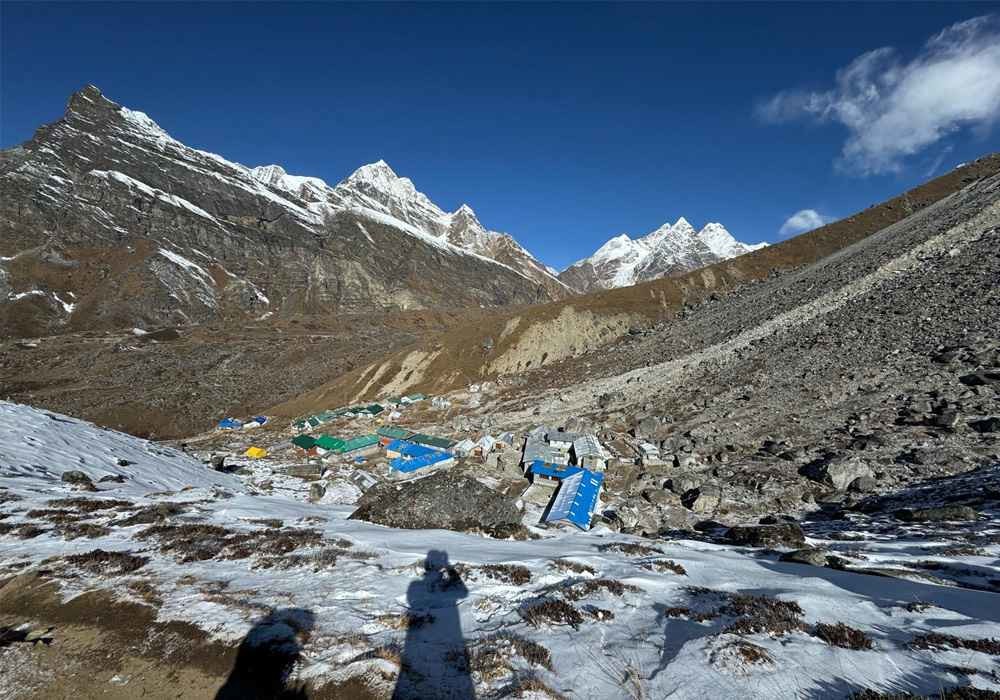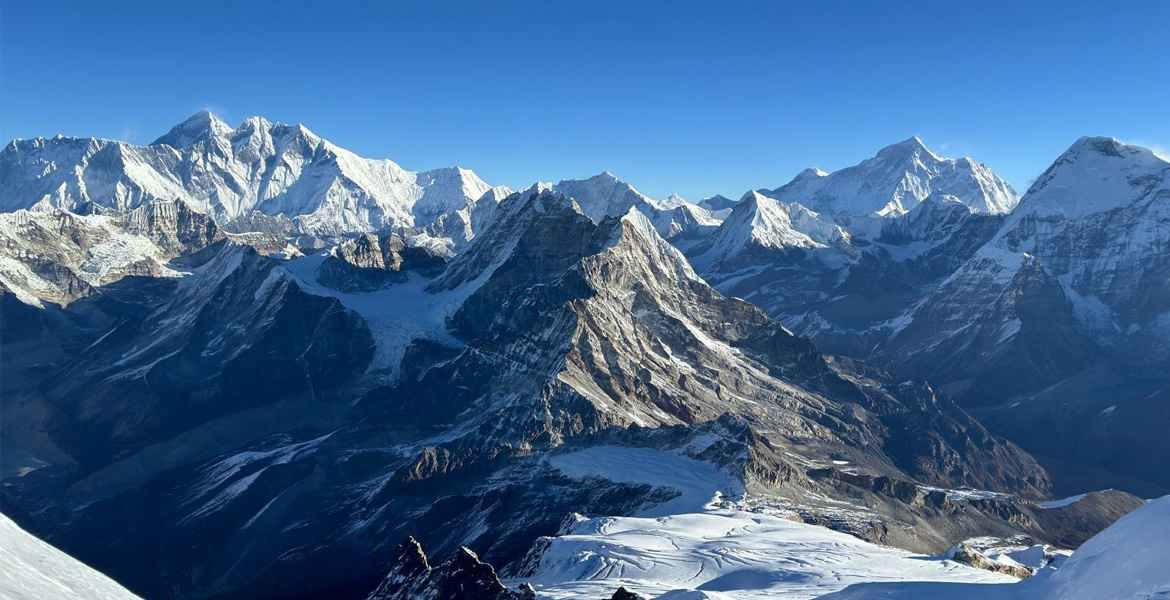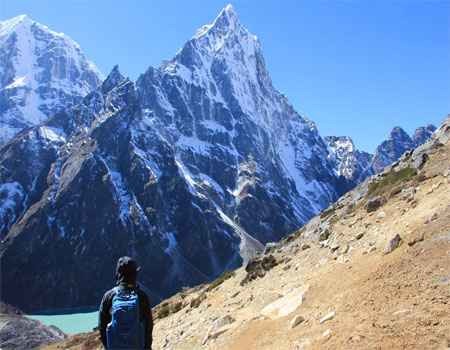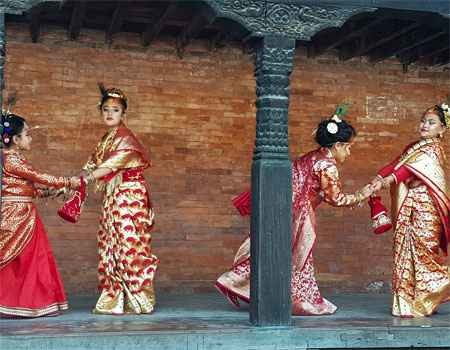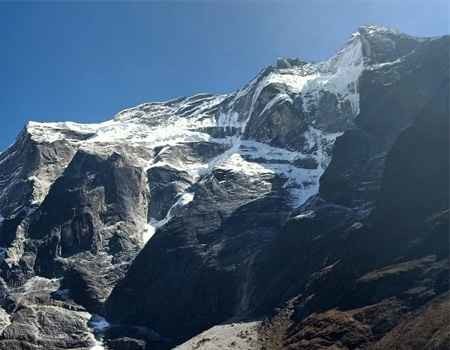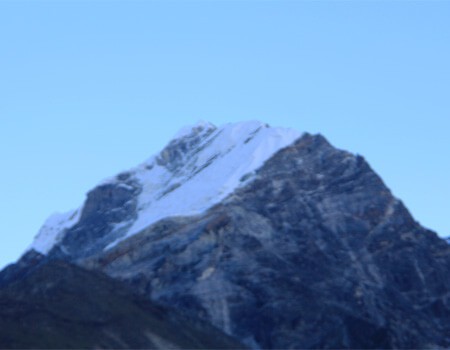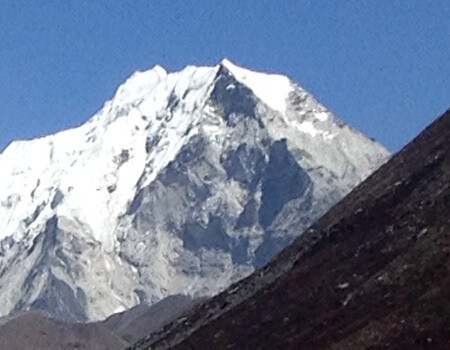Mera Peak (6,476 meters) is one of the most popular trekking peaks in Nepal. Once you reach the summit, you will have a thrilling adventure with breathtaking views of the Himalayas. Proper preparation and packing play a major role in a successful climb. The weather can be unpredictable in the mountains of Nepal, including the Mera Region, with its challenging terrain. Below is a comprehensive guide to the gear you need for this expedition, categorized under essential subheadings.
Things to Pack for Trekking Until High Camp
Before reaching Mera Peak's high camp, you'll trek through diverse landscapes ranging from lush forests to alpine terrain. The trek to Mera begins from Lukla, where you can reach it on a scenic flight from Kathmandu or Ramechhap (Manthali). The flights to Lukla usually operate in the morning due to unfavorable weather and wind during the day. However, the flights to Lukla also fly during the daytime if the visibility is perfect with no wind.
After landing at Lukla Airport, you walk towards Mera Region through Paiya, Pangkongma, Nasing Dingma, Chhatrakhola, Kothe, Thaknak, and Kare. You will have one rest day before heading to the Mera High Camp in Khare and staying in the guesthouses until Khare. Our climbing team will carry a tent and food for the one-night camp at Mera High Camp before you attempt the climbing to Mera Peak.
We are going to provide information on trekking gear to Mera Region's first section to make it easier to pack essential trekking equipment for Mera Peak before we go to the climbing section here:
Clothing
Base Layers: We suggest packing inner layers of moisture-wicking thermal tops and bottoms to regulate body temperature in the cold temperature for the mornings and evenings in the higher regions. These inner layers might make you extremely hot and uneasy if you wear them while walking, so it is better not to wear them during your day walk.
Mid-Layers: Mid-Layers are trekking shirts, fleece jackets, or lightweight down jackets for insulation for the upper body that you need to wear while walking from one camp to the other. We recommend packing some half-sleeved T-shirts and an extra pair to change into when you reach the guesthouse because the shirt you will be wearing while walking will be sweaty.
Outer Layers: It is essential to bring upper body wear like waterproof and windproof jackets to protect against wind, cold temperatures, rain, and snow while trekking in the Mera Region. Warm outer layers for the upper body protect from cold and prevent sickness in the mountains.
Trekking Pants: We recommend bringing a few lightweight, quick-drying pants with zip-off options for warmer days and windproof trousers for higher elevations while you trek in the Mer Region.
Warm Hat and Gloves: A warm winter hat, thin gloves, and a hat are essential for colder mornings and evenings. Even during the later daytime, it can be windy in the higher elevations, so you might need to wear them while walking sometimes.
Footwear
Trekking Boots: For trekking at lower altitudes in the Mera Region, we suggest wearing comfortable, waterproof boots with good ankle support.
Camp Shoes: The boots you will be wearing while walking might be sweaty, so we recommend bringing lightweight sports shoes, sneakers, or sandals for use at campsites and washrooms.
Trekking Socks: We suggest bringing merino wool or synthetic hiking socks (4–5 pairs) to keep your feet warm and dry. Always change socks in the evening when you reach the guesthouse. The pair you wear while walking might be sweaty, making your feet cold if you wear the same pair at the campsite.
Backpacks

Main Equipment Packing Bag
Daypack (20–30L): You must have a daypack to carry daily essentials like water, snacks, valuables, rain gear, and extra layers. You need this while walking because you won't often meet porters before the camp once you depart from one place.
Duffel Bag (50–60L): The main equipment packing bag is compulsory, and the porter carries it. If you do not have one, we provide our company bag for you.
Other Essentials
Trekking Poles or sticks: Trekking poles or sticks reduce strain on your knees during long descents, but not everyone needs them.
Water Bottles/Bladder: We suggest bringing at least a 2-liter capacity water bottle or camelback. Insulated bottles are recommended to prevent freezing at higher altitudes.
Sunscreen and lip Balm: We highly suggest using about 50 SPF sun cream to protect against intense UV rays at high altitudes.
Snacks: You may feel weak or hungry while walking between breakfast and lunch, so pack some energy bars, chocolates, and nuts in your daypack for quick energy boosts during the trek.
Personal Equipment for Climbing
You need special climbing gear as you ascend beyond the high camp towards Mera Peak's summit. You must bring some personal climbing equipment and some we provide for the Mera Peak adventure. Check the essential checklist for Mera Peak, which you need after the high camp to summit:
Climbing Gear
Mountaineering Boots: To climb Mera Peak, we recommend bringing insulated, lightweight, and waterproof boots compatible with crampons.
Crampons: Steel crampons with anti-balling plates for icy terrain are compulsory.
Ice Axe: A lightweight ice axe for stability on steep slopes and self-arresting in case of slips.
Climbing Harness: An adjustable harness that fits over bulky clothing for safety during rope-assisted sections.
Helmet: A lightweight climbing helmet protects against falling debris or ice.
Carabiners: For rope work, at least two locking carabiners (one large and one small) and four regular carabiners are essential.
Ascender & Descender Devices: These are mandatory for safely moving up and down fixed ropes during steep sections.
Additional Items
Rope: Infinity dry rope or equivalent for anchoring and belaying purposes.
Slings: One 3m/10ft sling and three 2 m/6 ft slings for flexibility in rope setups.
Altimeter Watch: To monitor altitude changes and aid in acclimatization planning.
Besides climbing equipment, the other essentials are also very important for Mera Peak, which we manage for you. The essentials for a night stay at the high camp and others are listed below, which we manage for you for your climbing adventure.
- Tents and poles for overnight stays at high altitudes.
- Cooking gear such as stoves, fuel, pots, and utensils.
- First Aid Kits with Essential Medicines.
- Navigation tools like maps, GPS devices, whistles, and compasses.
- Fixed ropes for securing steep sections of the climb.
If you rent equipment in Kathmandu, we help you ensure safety standards and fit well.
Buy or Rent Equipment in Kathmandu
Kathmandu is a hub for trekking and climbing gear. You can either buy or rent equipment here depending on your needs:
Rental Shops: If you are a first-time climber or do not climb often and may not want to invest in expensive gear, Items like crampons, ice axes, harnesses, and helmets are widely available at reasonable prices in Kathmandu.
Specialized Stores: If you prefer to buy the gear rather than rent it, there are many stores in Thamel selling a wide range of high-quality mountaineering equipment.
Please inspect all rented or purchased equipment thoroughly before heading out.
Consider Minimizing the Weight for Lukla Flight
Due to the size of the aircraft, flights to Lukla have strict weight limits, so you must consider minimizing the weight or paying an extra amount. You can take checked luggage and hand carry combined, which must not exceed 15 kg (10 kg checked + 5 kg hand carry).
Tips to Reduce Weight
- Wear heavy items like boots and down jackets during the flight.
- Use a compression sack to minimize the size of bulky items like sleeping bags.
- Leave non-essential items in Kathmandu (many hotels offer luggage storage).
- Purchase snacks or toiletries in Lukla rather than carrying them from Kathmandu.
- Porters will carry up to 20 kg of your gear during the trek; however, minimizing weight eases their load and yours.
Temperature & Weather Considerations
- The weather on Mera Peak varies significantly depending on altitude:
- At lower altitudes (up to 3,000 meters), temperatures range between 10°C and 20°C during the day but can drop below freezing at night.
- At higher altitudes (above 5,000 meters), daytime temperatures hover around -10°C to -15°C while nights can plummet below -20°C.
Key Weather Factors
Wind Chill: Strong winds make it feel much colder than actual temperatures.
Unpredictable Conditions: Snowstorms or sudden temperature drops are common above 4,000 meters.
How do you prepare to stay safe in uncertain conditions?
- Pack multiple layers that can be added or removed as needed.
- Ensure all clothing is waterproof or water-resistant.
- Carry extra gloves and socks, which are very needed, in case they get wet.
Final Thoughts
Packing smartly with the right equipment is critical for a safe and enjoyable Mera Peak climb. Focus on layering systems for clothing, invest in reliable climbing gear, and adhere to weight limits when flying to Lukla. By preparing thoroughly and considering weather conditions at various altitudes, you'll maximize comfort while increasing your chances of summiting successfully.
Whether you're a seasoned climber or a first-timer embarking on this Himalayan adventure, proper preparation will ensure an unforgettable experience!
